Diversity 101: The Multiracial Experience
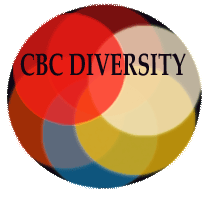
Contributed to CBC Diversity by Monica Brown
In the 2013 Census, nine million people selected more than one race. In states like California, where I grew up, as well as Texas, and New York, half a million or more people, in each of these states, marked multiple-races. Yet when I became a mother of two beautiful daughters, Isabella and Juliana, I looked around and couldn’t find books that represented the multiplicity of our experiences as a family of two continents, many races, and diverse cultural traditions. We are a nation of boxes, and until the 2000 census, we could mark only one. It is unfortunate that many of our children’s books mirror only part of our culture and that many voices still go unheard.
My Personal Connection
My daughter, Isabella (named in honor of my mother Isabel Maria) was born in 1997 in Tennessee. We were living in a region of Tennessee where there were very few Latinos and race was defined in terms of black and white. In the hospital, the nurses informed me that they adored my daughter, with her shock of black spiky hair, and that they called her “our little Eskimo.” My own family said, “She sure looks like a Valdivieso!” and yes, with in her dark eyes, light olive skin and beautiful black hair, I saw the face of my mestiza Peruvian Grandmother. But she also shared roots in Jewish Romania and Hungary, Scotland, and Italy. From my husband Jeff, came Sweden, Norway, Ireland, and Germany. Surely a citizen of the world was born on that day in 1997.
“The little Eskimo” was the first box my Isabella was put in. Because if you look “ambiguously ethnic”(and here I borrow Sherman Alexie’s phrase), people want to place you.
Recently, my daughter’s teacher used her as an example during a class discussion of Nazi Germany, stating “Because of her global ethnic origins, Isabella is an example of what the Nazis would have classified as Negroid.” He then pointed out blond students as examples of what the Nazis would have called “Aryan superiority.” I am sure the teacher intended the exercise to illustrate the absurdity of white supremacy, but I am still struck by the ways my multiracial teen, and other ethnically diverse students, are still put in boxes and on display.
Terminology
There are many words associated with multiracial people, some negative and some positive. I prefer mestiza, because it encompasses both my European and Peruvian indigenous origins. But that’s technically (or at least historically) incorrect because while I have Spanish and Indigenous Peruvian origins on my mother’s side, I also have Eastern European Jewish, Western European and African origins. Some people prefer the terms “mixed,” others “biracial.” Of the choices available, I choose “multiracial.” President Obama has jokingly called himself a mutt, and there are other terms meant to be humorous that I feel uncomfortable with. Though I’ve described myself as “half Peruvian” or “half Jewish” as a shortcut in the past, I fully reject those terms now. I am not half of anything. I am whole in myself, as are my daughters. I am the Latina daughter of a Latina woman. I am bilingual. I am the face of a complex, multiracial, multilingual, and multicultural past, present and future. As with any other groups, we must respect and listen to how people choose to self-identify.
Great Examples to Follow
There are very few picture books representing the multiracial experience, and of those, most focus only on color itself, not culture, and stay at very surface levels. Books such as Black Is Brown Is Tan (HarperCollins 1973/ 2002), by Arnold Adoff, Black, White, Just Right (Albert Whitman & Co. 1993) by Marguerite W. Davol, and The Colors of Us (Macmillan 2002), by Karen Katz, and are lovely, representing joyful multiracial families. Black Is Brown Is Tan was the first picture book, to my knowledge, to depict a multiracial family. In the book, Adoff writes poetically:
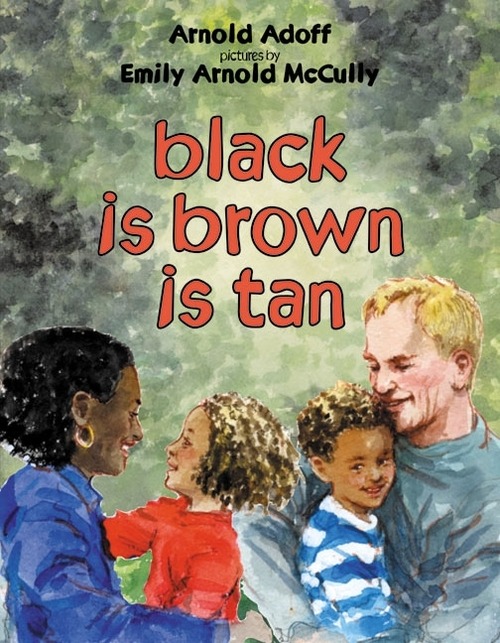
black is brown is tan
is girl is boy
is nose is
face
is all
the
colors
of the race
Adoff also mentions the individual characters in terms of color:
granny white and grandma black
kissing both your cheeks
and hugging back
Similarly, Karen Katz’s young protagonist gets ready to paint her friends, and focuses on color: “I think about all the wonderful colors I will make and I say their names out loud. Cinnamon, chocolate, and honey. Coffee, toffee, and butterscotch. They sound so delicious.” The clear message is all colors are beautiful. In Black and White, Just Right, Marguerite Davol writes, “Mama’s face is chestnut brown. Her Dark brown eyes are bright as bees. Papa’s face turns pink in the sun; his blue eyes squinch up when he smiles. My face? I look like both of them—a little dark, a little light. Mama and Papa say, ‘just right!” The illustrations include smiling images and text to match.
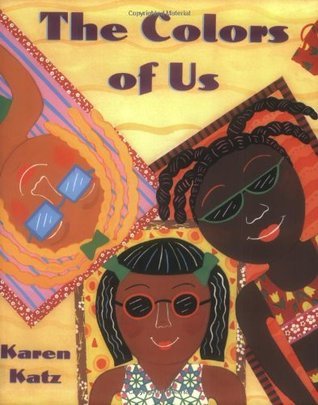
I respect these authors and publishers for putting positive images of multiracial families out there, because I know from personal experience just how difficult it can be to place these stories. Of my many published children’s books, my semi-autobiographical story Marisol McDonald Doesn’t Match/Marisol McDonald no combina (Lee and Low, 2011), illustrated by Sara Palacios, received the most rejections from publishers, which is ironic as it has resonated both critically and with children across the nation, winning multiple awards and starred reviews. It is now in its fifth printing!
Marisol McDonald is the daughter of two cultures and two languages who sometimes gets teased for being different. Her story affirms the power of being oneself. Marisol claims and redefines the idea of being “mismatched” and makes that label something marvelously her own. In the sequel Marisol McDonald and the Clash Bash/Marisol McDonald y la fiesta sin igual (Lee and Low, 2013), Marisol turns eight and continues to celebrate her individuality, while grappling with missing her Abuelita, who can’t get papers to visit from Peru.
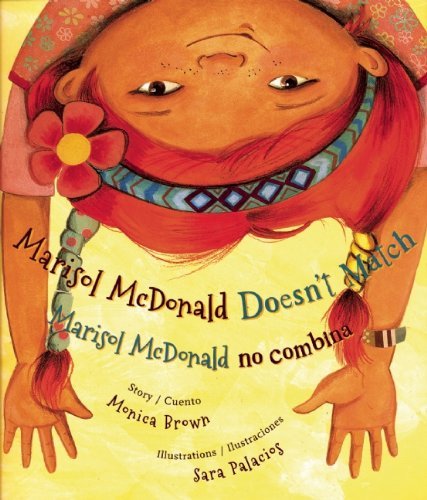
What I’d Like to See
I participate in book festivals and visit schools all over the country, and everywhere I go, I meet children who tell me, “I am Marisol McDonald!” and “She is me!” This doesn’t mean that they have olive skin and red hair, or that they are Peruvian and Scottish. Rather these exclamations of joy mean that young readers see themselves in this girl whose ethnic diversity and unique choices do not divide her, but makes her beautifully whole.
Children don’t see themselves in boxes. I think we are ready for more diverse and realistic renditions of the joy (and challenges) of the multiracial experience in our children’s picture books. Our children are beautiful blends of many cultural traditions, with roots and history here in the United States, as well as Africa, Asia, Native America, Latin America, Europe, and the Middle East. We are bilingual, multilingual, and our families’ religious traditions may also be diverse. It’s time that our children’s literature holds up a mirror that has room for all our reflections.

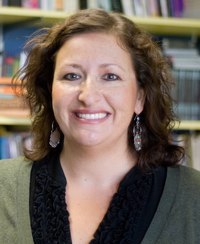
Monica Brown, Ph.D. is the author of more than a dozen picture books, including, Tito Puente: Mambo King/Rey del mambo, which won a Pura Belpré Honor for Illustration, the Christopher Award-winning Waiting for the Biblioburro, and the NCTE Orbis Pictus Honor book Pablo Neruda: Poet of the People. Finally, she is the author of the Marsiol McDonald series. Monica Brown will be speaking and signing her books at the Texas Library Association Conference in April 2014. Find out more about Monica at www.monicabrown.net or like her author page on Facebook.

